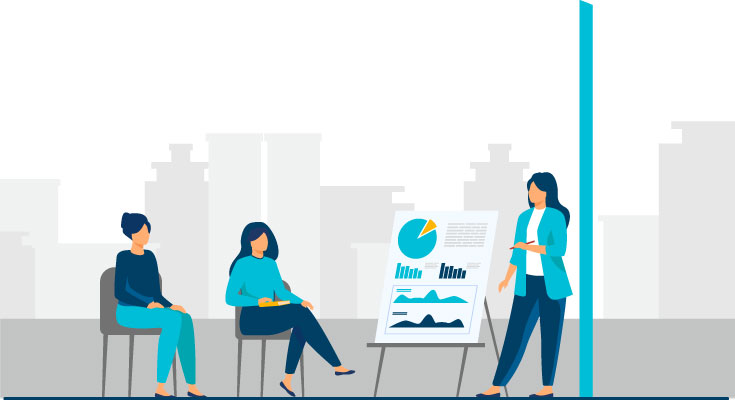How to Effectively Work With Clients to Deliver on Their Needs

Working effectively with clients isn’t just about fulfilling project briefs—it’s about understanding their core needs, managing expectations, and delivering results that build long-term relationships. Whether you’re a freelancer, agency, or product-based business, mastering client collaboration can set you apart in any industry. Here’s a comprehensive guide on how to effectively work with clients to deliver on their needs.
Understand the Client’s True Goals
Every client has surface-level requests and deeper motivations.
a. Go Beyond the Brief
Clients often come with a list of “wants,” but what they really need might not be explicitly stated. For instance, a request for a new website might actually be about improving conversions, not just aesthetics.
b. Ask Strategic Questions
Uncover their deeper needs with questions like:
- What does success look like to you?
- Why is this project important right now?
- What problems are you hoping to solve?
c. Create a Client Persona
Document their pain points, goals, and brand values. This helps you and your team stay aligned with their expectations throughout the project.
Set Clear Expectations From Day One
Misalignment leads to frustration. Set the foundation early.
a. Define Scope and Deliverables
Avoid scope creep by listing everything that will be delivered—and what won’t. Be crystal clear about timelines, costs, and communication norms.
b. Establish a Communication Plan
Agree on:
- Communication channels (e.g., email, Slack, Zoom)
- Response time expectations
- Weekly or bi-weekly update calls
c. Use Contracts and Proposals
Formalize everything in writing. Include payment schedules, revision limits, and timelines. This protects both parties.
Practice Active Listening
Clients need to feel heard—not just spoken to.
a. Paraphrase and Reflect
After your client explains something, summarize what they said in your own words. This shows you understand and gives them a chance to correct or clarify.
b. Be Present
During meetings or calls, avoid multitasking. Take notes, maintain eye contact (if on video), and ask follow-up questions.
c. Read Between the Lines
Pay attention to tone, hesitations, and body language. These cues often reveal concerns that clients may not express directly.
Maintain Transparent and Regular Communication
Silence breeds uncertainty, especially in long projects.
a. Weekly Progress Updates
Send short summaries of what was completed, what’s pending, and any blockers. This builds trust and reduces the number of “just checking in” emails from the client.
b. Be Honest About Roadblocks
If something goes wrong, tell them early. Clients appreciate transparency more than excuses. Offer solutions, not just problems.
c. Use Visuals and Demos
Where possible, show rather than tell. Wireframes, mockups, sample outputs, and prototypes can eliminate misunderstandings.
Involve Clients as Collaborators, Not Just Customers
Make your clients feel like strategic partners.
a. Invite Feedback in Stages
Don’t wait until the final delivery. Involve them during brainstorming, drafts, and testing phases. This increases buy-in and reduces revisions.
b. Celebrate Milestones Together
Acknowledge completed phases with a quick check-in or a celebratory message. Small celebrations go a long way in building rapport.
c. Educate Along the Way
If you’re using complex processes, break them down for the client. Teach them what you’re doing and why. Empowered clients are more cooperative and appreciative.
Handle Feedback With Grace and Professionalism
Feedback is inevitable. How you handle it defines your professionalism.
a. Separate Ego From Execution
Clients critique the work, not you. Stay calm, listen, and take notes even if the feedback feels harsh.
b. Ask Clarifying Questions
Instead of assuming what “This doesn’t feel right” means, ask:
- What part specifically feels off?
- Can you give an example of what you were expecting?
c. Offer Your Expertise
Sometimes clients ask for changes that compromise quality. Politely explain the trade-offs, offer better alternatives, and guide them toward the best decision.
Deliver More Than Expected (But Not Always More Work)
Delight your clients without sabotaging your boundaries.
a. Focus on Quality
Overdeliver in thoughtfulness, precision, and attention to detail—not in endless revisions or unpaid extras.
b. Add Thoughtful Touches
Examples:
- A bonus template or style guide
- A short loom video explaining the deliverable
- A checklist for how they can best use your work
c. Offer Suggestions for the Future
At project wrap-up, suggest the next logical step—even if you don’t offer it. This positions you as a long-term partner.
Collect Feedback and Testimonials Post-Delivery
Don’t let the relationship end when the project does.
a. Send a Feedback Form
Ask:
- What did you enjoy most about working with me?
- What could I have done better?
- Would you recommend me?
b. Request a Testimonial
Make it easy. Send a draft they can edit or approve.
c. Follow Up in the Future
Check in a few weeks later:
- Has the project delivered the results you expected?
- Any support needed?
- Anything coming up where I can help?
Refine Your Internal Systems Based on Experience
Each client teaches you something new.
a. Document Lessons Learned
Create an internal knowledge base:
- What worked?
- What didn’t?
- What systems or templates could save time?
b. Update Your Onboarding Process
If a client was confused early on, that’s a signal to improve onboarding emails, welcome guides, or kickoff call structure.
c. Automate Where Possible
Use tools like Trello, ClickUp, or Notion to manage tasks, and tools like Calendly, Loom, or Slack to smooth client touchpoints.
Build Long-Term Relationships, Not Just Transactions
Retaining a happy client is easier than winning a new one.
a. Stay in Touch
Send occasional updates, relevant articles, or check-ins. Be top-of-mind when they’re ready to invest again.
b. Create a Referral System
Offer a discount or bonus for referrals. Happy clients are your best marketing tool.
c. Expand Your Services Thoughtfully
Offer complementary services based on client needs. If you built their website, can you offer ongoing SEO, maintenance, or content?
Final Thoughts
Working effectively with clients is both an art and a science. It requires empathy, structure, communication, and a relentless focus on delivering value. When you prioritize your client’s goals, establish clear processes, and treat them as collaborators, you don’t just complete projects—you build trust and grow a reputation that attracts more business. For more information on Nathan Garries Edmonton, visit this Website.
Client success is your success. Master the relationship, and the results will follow.







